2021年9月,最具权威的英语词典——《牛津英语词典》更新增补了26个韩源词作为词条。高丽大学教授辛志英讲述了自己在作为顾问参与此次增补过程中的经历与感受。
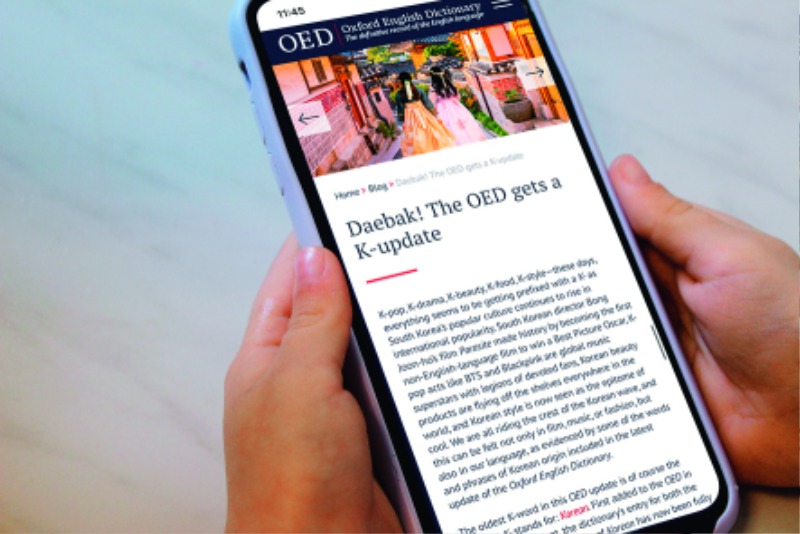
2021年9月,《牛津英语词典》新增了26个韩源词作为词条。而自1928年初版发行至此次更新之前,被收录的韩源词总共只有24个。由此可见,近年来韩国大众文化在全世界的影响力已大幅提升。
© Shutterstock
2021年5月的某一天,我收到牛津大学赵知恩教授的一封电子邮件。我和她几乎每周都会用讯佳普开研究会议并经常互相联系,因此收到她的邮件并没有什么特别之处。可是,她在这封邮件里提出了一个非常有趣的建议。4月初,她接到牛津大学出版社的邀请,请她当顾问。她问我是否有意向跟她一起合作。这项工作是审核将要新收录到《牛津英语词典》的韩源词并担任顾问,我当然没有理由拒绝。于是,我立即回复邮件,表示愿意跟她合作。
赵知恩教授收到我的回复后,给《牛津英语词典》负责国际英语的编辑达妮卡·萨拉扎尔博士发了一封邮件,建议委任我为顾问。萨拉扎尔博士随后给我发来邮件,表示很高兴并很感谢我跟他们一起工作。就这样,这个让我有机会跟自己喜欢的人合作的令人兴奋的项目开始了。
两个PDF文件
接受邀请之后,我收到了两个PDF文件。第一个文件是萨拉扎尔博士编辑的,她把2021年9月进行最新更新时要收录的韩源词整理成了两个表格,一共2页。其中一个表格列出了新收录的词条目录以及相关疑问,另一个表格则是已经收录的词条中需要修改的词条目录以及相关疑问。
第二个文件是词源负责人卡特琳·迪尔发来的,一共6页。《牛津英语词典》具有很强的学术词典性质,所以词条含有多个层次的信息,包括词源、大量例句以及多种语言学信息。如果不了解相关语言,想要仅凭英语资料就去准确分析外语词的词源是件既困难又有风险的事情。因此就词源而言,向以该语言为母语的专家征求意见是必须的。词源负责人的提问非常具体,想确认的内容也很明确:以自己可以接触到的资料为基础做出的判断是否正确?如果不正确,那具体是哪一部分不正确?为什么不正确?她还详细询问了难以确定词源的情况以及与此相关的一些疑问。令我吃惊的是,她不懂韩语,是怎样得出这些推论的呢?虽然个别推论有些离谱,但作为顾问,我可以进行修改完善,这让我感到这项工作很有意义。
打开这两个文件,令我感到最惊讶与高兴的是计划收录的词条数量——竟然多达26个。《牛津英语词典》一次性收录这么多韩源词,毫不夸张地说,是一个大事件。或许有人会说,《牛津英语词典》足足有60多万个词条,这次要收录的韩源词才有26个,未免太大惊小怪了吧。但是,如果回顾一下这部词典142年的出版历史,查一查迄今为止韩源词曾经何时被收录以及收录过多少词条,就不能不感到兴奋了。
aegyo, n. and adj.
A. n.
Cuteness or charm, esp. of a sort considered characteristic of Korean popular culture. Also: behaviour regarded as cute, charming, or adorable. Cf. KAWAII n.
B. adj.
Characterized by ‘aegyo’, cute, charming, adorable.
banchan, n.
In Korean cookery: a small side dish of vegetables, etc., served along with rice as part of a typical Korean meal.
bulgogi, n.
In Korean cookery: a dish of thin slices of beef or pork which are marinated then grilled or stir-fried.
chimaek, n.
In South Korea and Korean-style restaurants: fried chicken served with beer. Popularized outside South Korea by the Korean television drama My Love from the Star (2014).
daebak, n., int., and adj.
A. n.
Something lucrative or desirable, esp. when acquired or found by chance; a windfall, a jackpot.
B. int.
Expressing enthusiastic approval: ‘fantastic!’, ‘amazing!’
C. adj.
As a general term of approval: excellent, fantastic, great.
fighting, int.
Esp. in Korea and Korean contexts: expressing encouragement, incitement, or support: ‘Go on!’ ‘Go for it!’
hallyu, n.
The increase in international interest in South Korea and its popular culture, esp. as represented by the global success of South Korean music, film, television, fashion, and food. Also: South Korean popular culture and entertainment itself. Frequently as a modifier, as in hallyu craze, hallyu fan, hallyu star, etc. Cf. Korean wave n. , K- comb. form
K-, comb. form
Forming nouns relating to South Korea and its (popular) culture, as K-beauty, K-culture, K-food, K-style, etc.Recorded earliest in K-POP n. See also K-DRAMA n.
K-drama, n.
A television series in the Korean language and produced in South Korea. Also: such series collectively.
kimbap, n.
A Korean dish consisting of cooked rice and other ingredients wrapped in a sheet of seaweed and cut into bite-sized slices.
Konglish, n. and adj.
A. n.
A mixture of Korean and English, esp. an informal hybrid language spoken by Koreans, incorporating elements of Korean and English.
In early use frequently depreciative.
B. adj.
Combining elements of Korean and English; of, relating to, or expressed in Konglish.
In early use frequently depreciative.
Korean wave, n.
The rise of international interest in South Korea and its popular culture which took place in the late 20th and 21st centuries, esp. as represented by the global success of Korean music, film, television, fashion, and food ;= HALLYU n.; Cf. K- comb. form.
manhwa, n.
A Korean genre of cartoons and comic books, often influenced by Japanese manga. Also: a cartoon or comic book in this genre. Cf. MANGA n.2
Occasionally also applied to animated film.
mukbang, n.
A video, esp. one that is livestreamed, that features a person eating a large quantity of food and talking to the audience. Also: such videos collectively or as a phenomenon.
noona, n.
In Korean-speaking contexts: a boy’s or man’s elder sister. Also as a respectful form of address or term of endearment, and in extended use with reference to an older female friend.
oppa, n.
1.In Korean-speaking contexts: a girl’s or woman’s elder brother. Also as a respectful form of address or term of endearment, and in extended use with reference to an older male friend or boyfriend.
2.An attractive South Korean man, esp. a famous or popular actor or singer.
samgyeopsal, n.
A Korean dish of thinly sliced pork belly, usually served raw to be cooked by the diner on a tabletop grill.
skinship, n.
Esp. in Japanese and Korean contexts: touching or close physical contact between parent and child or (esp. in later use) between lovers or friends, used to express affection or strengthen an emotional bond.
trot, n.
A genre of Korean popular music characterized by repetitive rhythms and emotional lyrics, combining a traditional Korean singing style with influences from Japanese, European, and American popular music. Also (and in earliest use) as a modifier,as in trot music, trot song, etc.This genre of music originated in the early 1900s during the Japanese occupation of Korea.
unni, n.
In Korean-speaking contexts: a girl’s or woman’s elder sister. Also as a respectful form of address or term of endearment, and in extended use with reference to an older female friend or an admired actress or singer.
简直就是“大发”
从正式编撰到第一版《牛津英语词典》最后分册的出版用了49年。在1928年出版的12卷初版中,收录有约41万4千8百个词条以及182万多条引例,却没有一个词条与韩语有关。1933年,初版增编版出版,这部词典才首次收录了与韩国有关的词条,分别是“Korean”与“Koreanize”。在此后的增编版中,又增添了几个词。1976年收录6个,有“gisaeng”(艺妓:隶属于宫廷或地方官厅,负责唱歌、跳舞等表演的女性)、“Hangul”(韩文:韩国的固有文字)、“kimchi”(辣白菜:在白菜中混入各种调料后发酵而成的食品)、“Kono”(六子棋:韩国的棋盘游戏)、“myon”(面:行政区划单位)、“makkoli”(马格利酒:一种传统酒)。1982年收录了7个,有“sijo”(时调:传统声乐形式或者由三行构成的格律诗)、“taekwondo”(跆拳道:一种传统武术)、“won”(元:货币单位)、“yangban”(两班:传统社会的统治阶层)、“ri”(里:行政区划单位)、“onmun”(谚文:对韩文的俗称,含贬义)、“ondol”(火炕:传统房屋的地面供暖设施)。这样,在1989年出版的第二版中,一共可以看到15个韩源词。
到了21年之后的2003年,韩源词再一次被收录进这部词典。当时被收录的是“hapkido”(合气道:一种近代武术)。此后被零星收录的有“bibimbap”(拌饭:一种将各种菜、肉混入饭里拌着吃的饮食,2011年)、“soju”(烧酒:一种蒸馏酒,2015年)、“webtoon”(网络漫画:在媒体平台连载的漫画,2015年)、“doenjang”(大酱,2016年)、“gochujang”(辣椒酱,2016年)、“K-pop”(韩国流行音乐,2016年)、“chaebol”(财阀:以家族为中心的大企业,2017年)。2019年,朝鲜的治国理念“Juche”(主体思想)也被收录。
如上所述,截至2021年9月《牛津英语词典》更新之前,被收录的韩源词总共不过24个。因此,这次一下子就收录26个,借用萨拉扎尔博士的话就是“daebak(大发)”!
事实上,这次新收录的词条中就包括“Daebak(大发)”一词,意思是“意外获得的横财”或者“特别棒的事情”,这个词在海外早就广为人知了。另外,同时被收录的还有“hallyu”(韩流)和具有相同含义的英语单词“Korean wave”,以及“K-drama”(韩剧)、“mukbang”(吃播:以吃东西为主的直播节目)、“oppa”(欧巴:女性的哥哥)等,这充分证明了韩国大众文化的国际地位得到了大幅提高。另一个有趣的事实是,“fighting”(加油)、“skinship”(肢体接触)等此前备受贬损的韩式英语词与“Konglish”(韩式英语)一词也被同时收录(新收录的词条及其含义可参见新词列表)。
各种各样的提问
牛津方面想要了解的内容多种多样。有些关涉新收录的词,但也有些关涉12个已经收录但需要修改的词。举例来说,她们让我提供收录在1976年增编版中的“gisaeng”(艺妓)一词的音节划分信息,问我“kimchi”(辣白菜)一词的词源。但是,最多的是关于词的结构的。她们想知道词的语义分割,每个语义片段起源是什么。比如,她们问我“banchan(小菜)”中的“ban”与“kimbap(紫菜包饭)”中的“bap”是不是存在某种关联。
她们还让我审核对计划收录的词的分析是否正确,询问我其中一些词在韩语中的用法是怎样的、是否和在朝鲜的用法存在差异。还有一些有趣的问题,比如,“oppa”(女性对哥哥的称呼)可以指男朋友,那么“nuna”(男性对姐姐的称呼)是否也可以指女朋友。在解答疑问的过程中,我也了解到了一些新的信息。在有关“PC bang”(网吧)的提问中,她们很想知道那里是否售卖食品。我知道至少会售卖碗面,但是能否把碗面称为食品呢?我带着内心的疑惑搜索了一下。结果,我知道了一个事实——最近甚至出现了“PCtaurant”(PC+restaurant)的说法,里面会售卖各种各样的食品。于是,我将搜索到的图片保存下来并加了注释,通过邮件发给了她们。
为了解答疑问,我参考了从博客帖文到论文等各种各样的资料。如果我不做顾问,不解答这些疑问,恐怕会有很多有趣的事实被我直接忽略过去。我把解答内容梳理出一些眉目,与赵知恩教授进行了商讨,之后整理出最终答案,发给了负责人。后来,我又解答了几个追加问题,然后我的顾问工作就结束了。
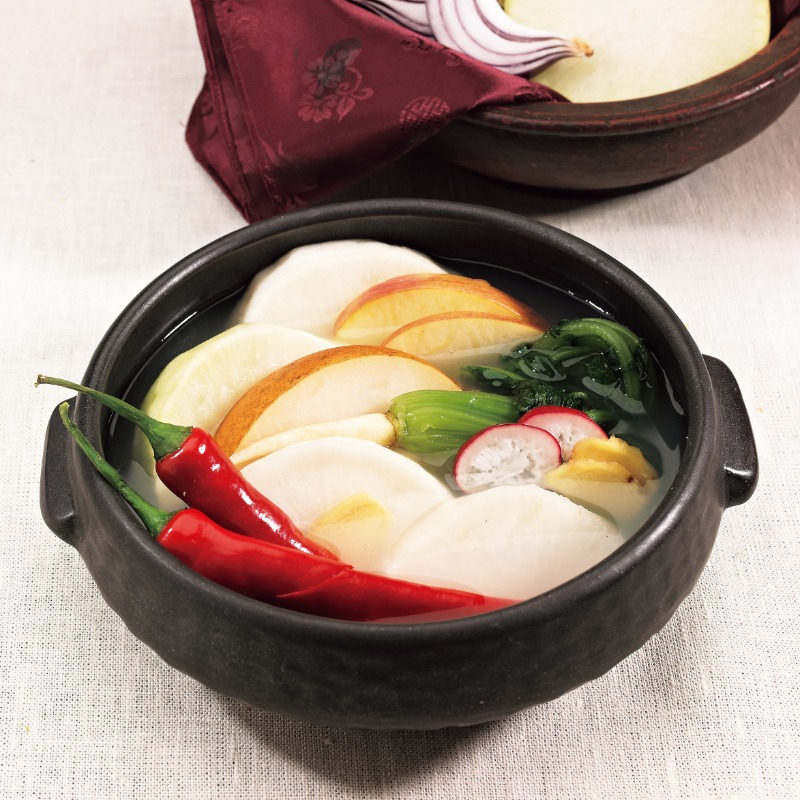
dongchimi, n.
In Korean cuisine: a type of kimchi made with radish and typically also containing napa cabbage, spring onions, green chilli, and pear, traditionally eaten during winter. Cf.
KIMCHI n.
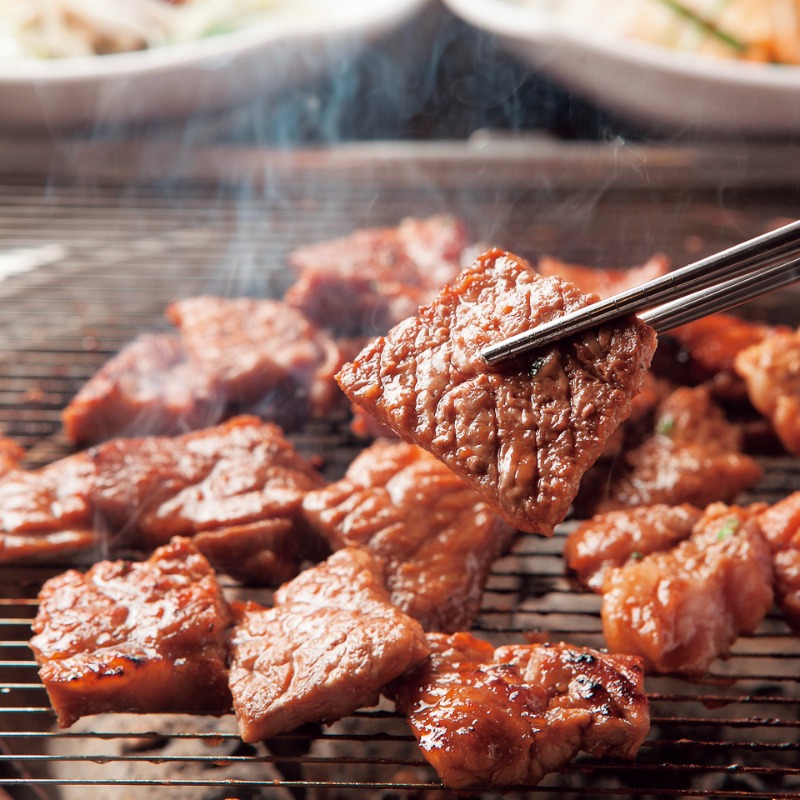
galbi, n.
In Korean cookery: a dish of beef short ribs, usually marinated in soy sauce, garlic, and sugar, and sometimes cooked on a grill at the table.

hanbok, n.
A traditional Korean costume consisting of a long-sleeved jacket or blouse and a long, high-waisted skirt for women or loose-fitting trousers for men, typically worn on formal or ceremonial occasions.
© MBC
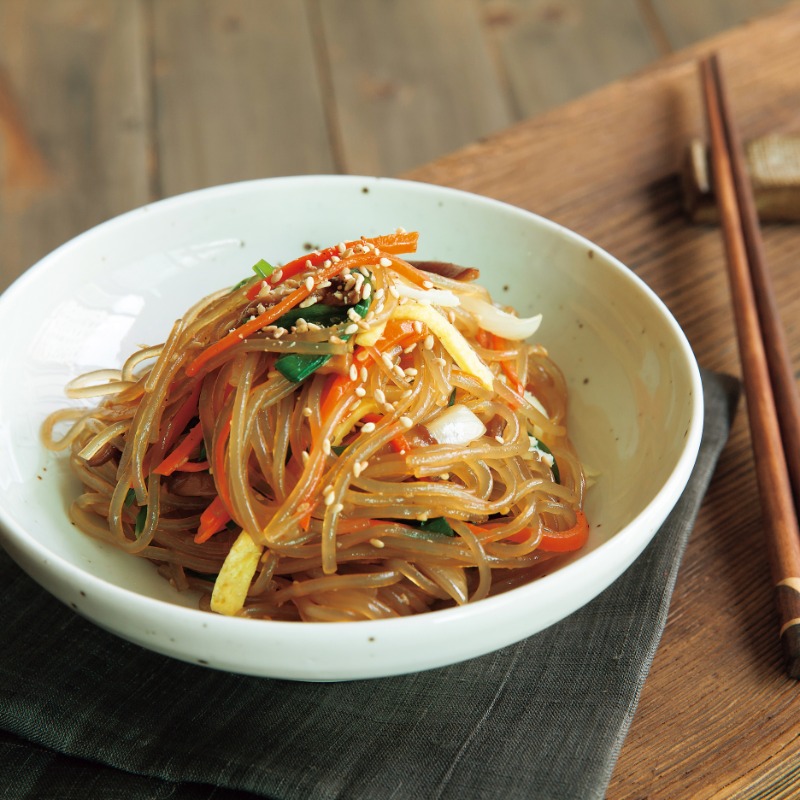
japchae, n.
A Korean dish consisting of cellophane noodles made from sweet potato starch, stir-fried with vegetables and other ingredients, and typically seasoned with soy sauce and sesame oil. Cf.
cellophane noodle n.
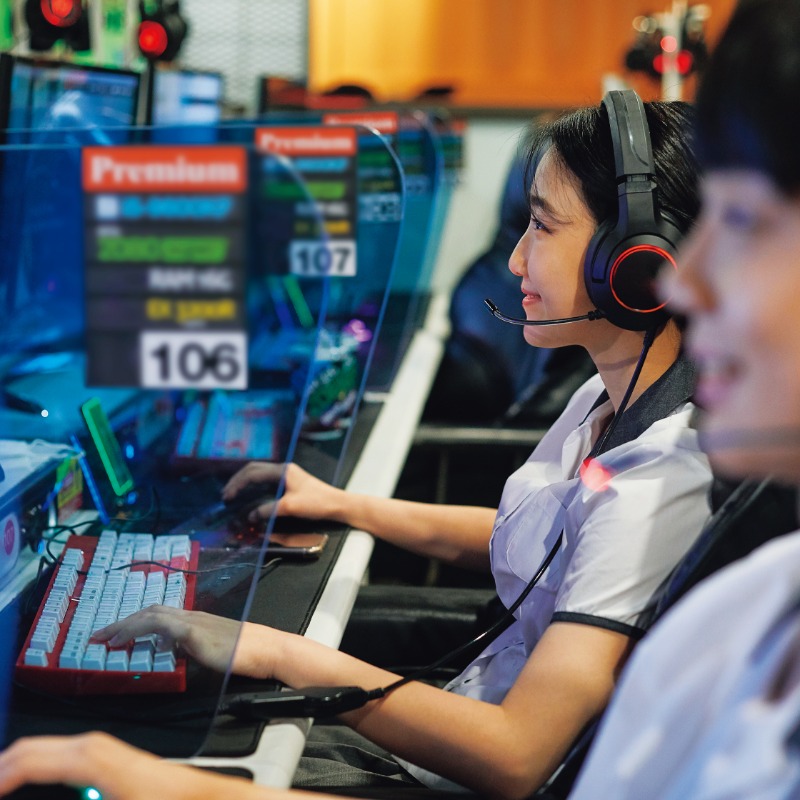
PC bang, n.
In South Korea: an establishment with multiple computer terminals providing access to the internet for a fee, usually for gaming.
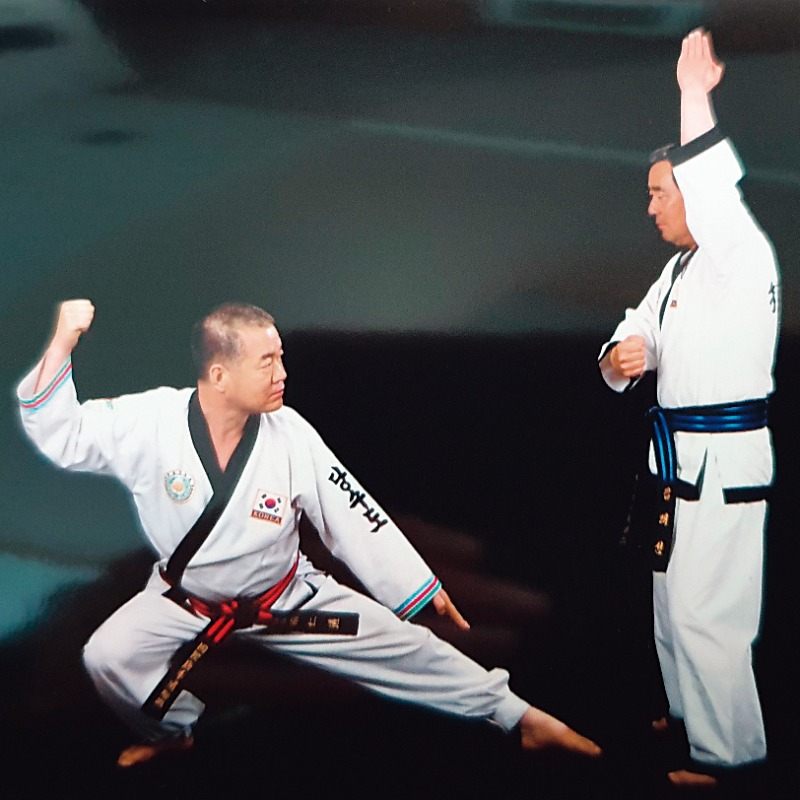
tang soo do, n.
A Korean martial art using the hands and feet to deliver and block blows, similar to karate.
© International Tang Soo Do Federation
收录的标准
关于这一点,我有几个疑问。为什么此前没有很多韩源词出现在《牛津英语词典》里呢?为什么这次却一下子收录了数量多于此前总数的词条呢?这些词条是由谁筛选出来,又是怎样筛选的呢?我们应该怎样理解收录这么多词条的意义呢?那么,今后会怎样呢?
总之,此次收录的词条直观地体现了韩流在全球的影响力。因为韩国流行音乐的粉丝用来称呼人气偶像组合成员而广为人知的“oppa”“nuna”“unni”(女性对姐姐的称呼),还有粉丝要求偶像撒娇时喊的“aegyo”(撒娇),这些词已经在各国粉丝之间成为了一种共同语言,后来使用范围逐渐扩大,最终被收录进词典。随着韩剧、吃播以及韩国流行歌曲在国际上受到关注,“K-drama”“mukbang”“trot”也被收录。在“webtoon”一词于2015年被收录之后,“manhwa”(漫画)一词也被收录了进去。更神奇的是,在韩国因被视为俚语而被词典拒之门外的“mukbang”与“chimaek”(炸鸡和啤酒,英语词“chiken”和韩语词“maekju”的合成词)竟然也被收录进了《牛津英语词典》。
在韩流风靡之前,拥有60万个词条的《牛津英语词典》仅收录了24个与韩国有关的词。这个事实意味着韩国文化的影响力在英语圈非常微弱,而且英语文献中也没有出现过多少韩源词。当然,具有代表性的词太少也是一个原因。但是,一个词要想被收录,就要常常被编辑注意到,在英语文献中的使用要持续一定的时间,并且要满足“在期待的语境下使用”这一条件。
那么,今后会怎样呢?事实上,26个词条只不过是个开始。这些词之所以能被收录,是因为之前最少被持续使用了15-20年以上。就在这些词被收录之时,韩国大众文化在全球的影响力已经不可同日而语。特别值得关注的是,就像近期大火的《鱿鱼游戏》一样,韩国文化内容通过全球媒体平台得到广为推介,第一时间将韩语送进全世界人的耳朵里。这样一来,韩语必将得到更加广泛的传播。这就是我此时此刻怦然心动的原因。(金粉红译)